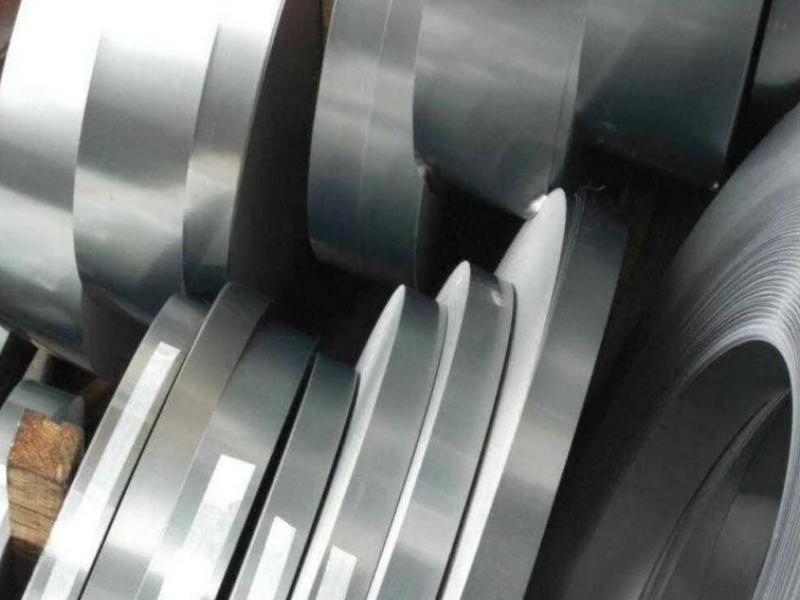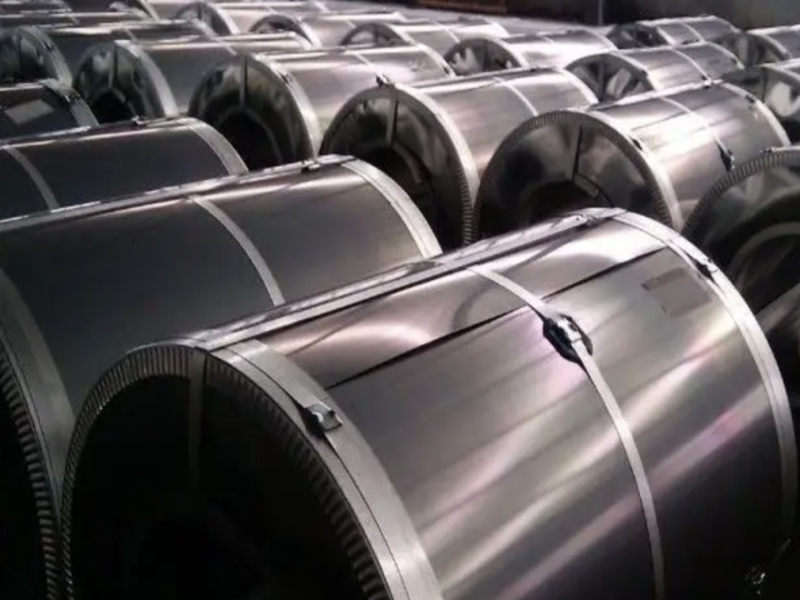
Compared with hot-rolled silicon steel sheets, a significant feature of cold-rolled silicon steel sheets is that a layer of coating is applied on the surface during their production process. This coating not only has high insulation performance, but also has good corrosion resistance, processing performance, and heat resistance. The surface coating of oriented steel has the effect of improving magnetism. The interlayer insulation of hot-rolled silicon steel sheets is mainly achieved by soaking in clear varnish and drying after acid washing.
The insulation coating currently used for non oriented silicon steel is an inorganic organic hybrid insulation coating, abbreviated as a semi organic coating (T4 chromate organic resin): T0: water, boric acid (H3BO3), chromic anhydride (CrO3), additives, etc; T0 specific gravity (1.161-1.175g/cm3, 25 ℃).

The main reasons affecting the quality of coating solution
(1)The influence of temperature
As the temperature increases, the effective storage time of T4 coating solution becomes shorter, namely 10 ℃ for 5 days, 20 ℃ for 3 days, and 30 ℃ for 2 days.
(2)The impact of time
At the same temperature, with the extension of time, the color of the coating solution becomes darker and eventually deteriorates and scrapped. Due to the influence of temperature on the coating solution, the coating system has a separate refrigeration system, using water as the medium, and using a circulating pump to deliver cold water to various cooling points (including circulation tanks and storage tanks). Serpentine tubes are distributed inside the tanks, and cold water continuously circulates inside the tubes to maintain the temperature of the coating solution at<20 ℃. To ensure the freshness of the coating solution.
Due to the influence of time on the coating solution, the coating solution should be used up as soon as possible in production, and fresh coating solution should be replenished to prevent the coating solution from deteriorating and causing coating defects; When the unit encounters faults and maintenance requires a long period of time to stop the coating system, the coating liquid in the circulation tank and storage tank should be drained in a timely manner and rinsed with water to prevent the coating liquid from deteriorating and clumping, blocking the pump and pipeline.
Control of coating amount
Coating amount: The weight of the coating applied to the steel strip per unit area, measured in g/m2. In order to ensure the comprehensive performance of the coating, various coatings must be tested in advance to determine the target value and control range of their optimal coating amount.
Factors affecting coating amount:
(1)Specific gravity of coating solution: The higher the specific gravity, the higher the coating amount;
(2)Unit speed: As the coating roller is a follower roller, the coating amount is proportional to the unit speed, and the higher the speed, the thicker the coating amount;
(3)Coating roller pressing amount: The coating amount is inversely proportional to the coating roller pressing amount, and the larger the pressing amount, the thinner the coating amount;
(4)Roller type of coating roller: The coating roller is made of acid resistant rubber, and the factors of roller type include the hardness, diameter, groove angle, depth, and number of teeth per unit length of the rubber roller. The greater the hardness, diameter, angle, groove depth, and number of teeth, the thicker the coating amount.

Causes and Countermeasures of Major Defects in Coatings
1. Leakage coating:
Cause: Due to blockages in equipment such as nozzles, manifolds, and circulation pumps, as well as incorrect or insufficient spray angle pressure of the coating solution.
Countermeasure: Check frequently during operation, promptly clear and clean the manifold, adjust the manifold spray pressure and angle.
2. Double line:
Cause: The specific gravity of the coating solution is too high; The viscosity of the coating liquid is high; High hardness of the coating roller; The amount of roller pressing is small.
Countermeasure: Strictly regulate the liquid preparation operation and control the specific gravity of the coating liquid within the target range according to the process; Reasonably control the temperature of the coating solution. When the temperature is high, the coating solution is prone to aging, but when the temperature is too low, the viscosity of the coating solution is high, and the diffusion during coating is slow, resulting in double lines (optimal at 10-20 ℃); The hardness of the coating roller is high, and the coating is prone to producing double lines. Therefore, the coating roller with lower hardness should be selected as much as possible according to the speed of the unit, and the amount of pressure applied by the coating roller should be adjusted reasonably according to the actual coating situation.
3. Uneven color tone:
Cause: Poor alkaline washing and oil stains on the steel plate; Uneven coating; Coating roller aging; Improper control of drying and firing temperature, etc.
Countermeasure: Improve the quality of alkaline washing; Strictly control the coating amount according to the coating standards, adjust the roller pressing amount in a timely manner, ensure that the coating amount on the entire steel plate surface is controlled within the target range and the deviation is as small as possible, thereby ensuring the uniformity of the coating; Discover the aging phenomenon of the coating roller, replace the coating roller in a timely manner, and control the drying and sintering furnace temperature in a timely and reasonable manner according to the changes in the unit speed.
HWHG successfully signed the HuiShan project
2023-12-082022,Hongwang Group Vertical Furnace Production line 1st Stainless Steel Coil officially Showing up!
2022-03-23HWHG Ranks 442nd in 2024 China Top 500 Enterprises
2024-10-24The 21st China-ASEAN Expo
2024-11-20Yield Strength Vs Tensile Strength
2023-06-26South China Stainless Steel Sheet Stereo Intelligent Warehouse Online!
2020-09-10






